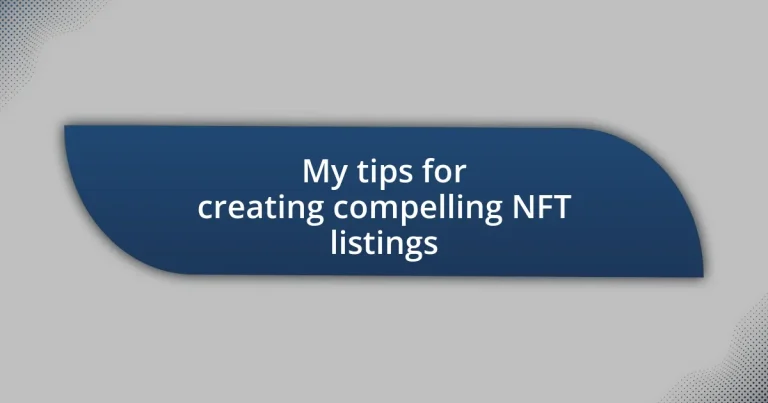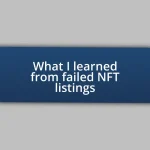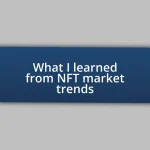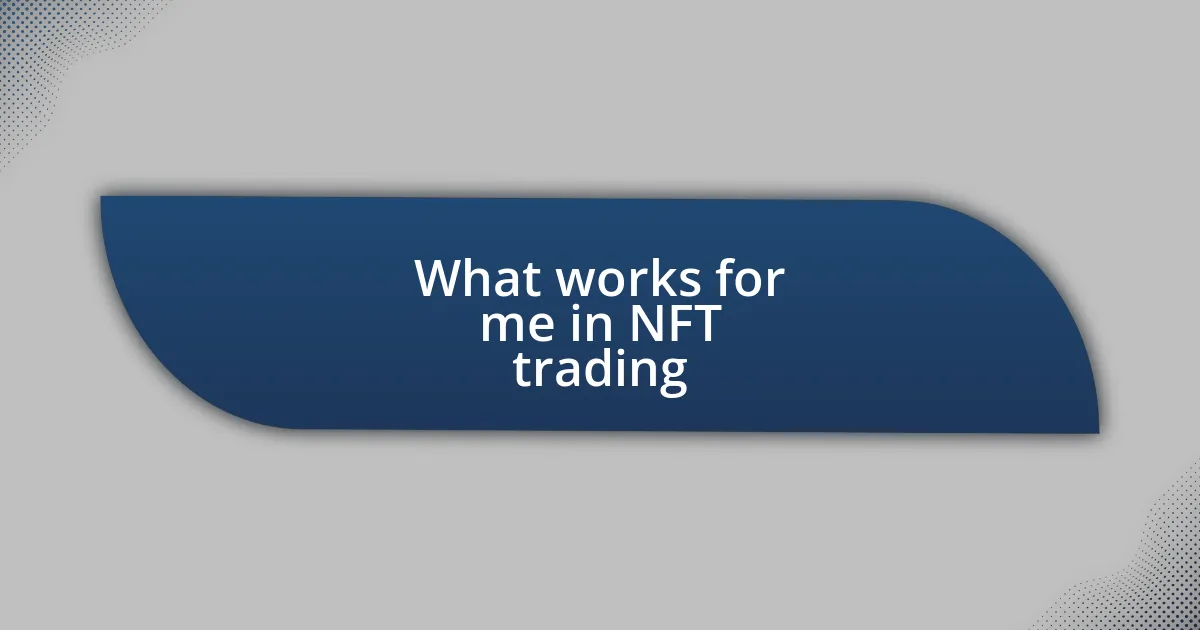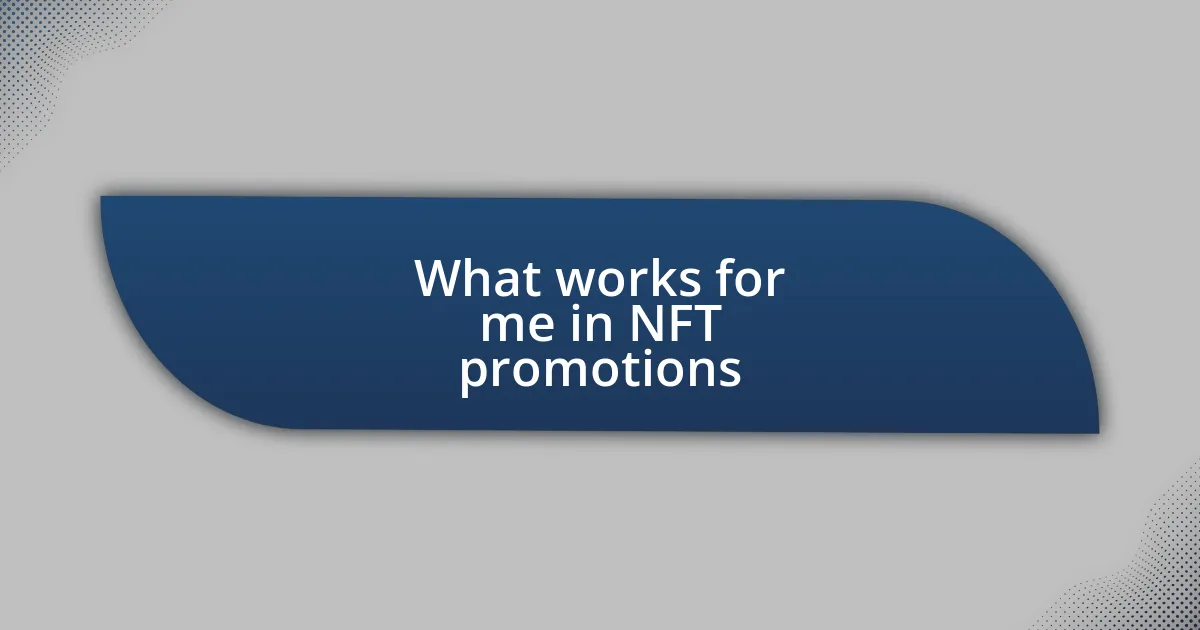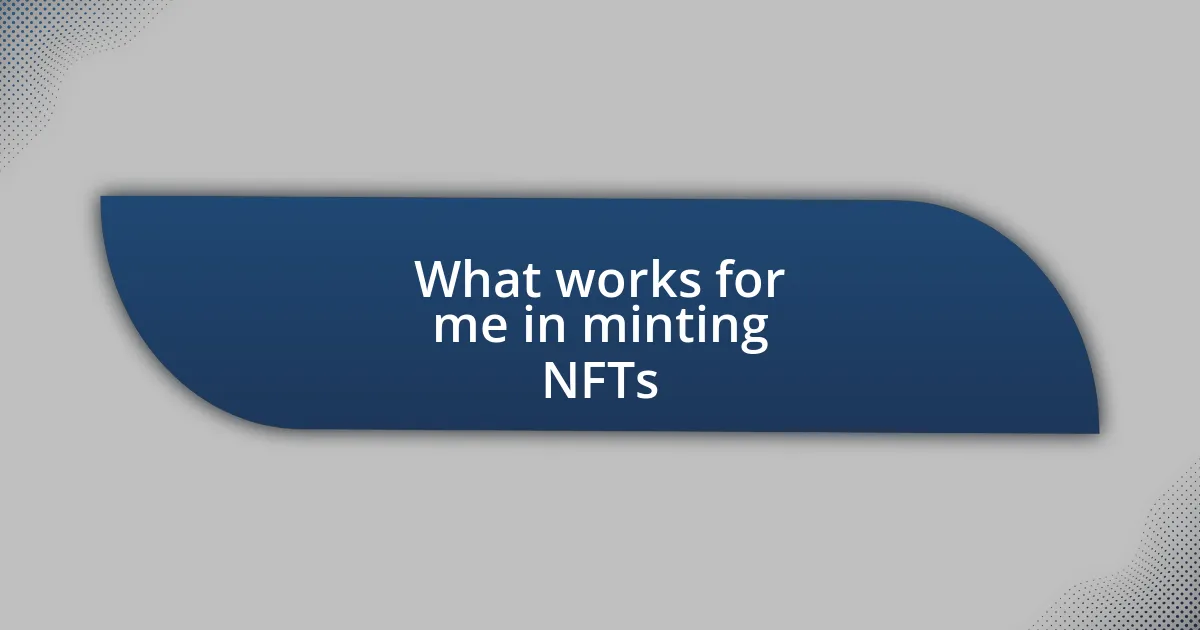Key takeaways:
- Understanding your target audience and engaging with them enhances the appeal of NFT listings.
- Choosing the right marketplace significantly impacts visibility and connection with potential buyers.
- Creating high-quality visuals and compelling descriptions can emotionally engage collectors and improve sales.
- Adapting pricing strategies and utilizing social media for promotion are essential for success in the NFT market.
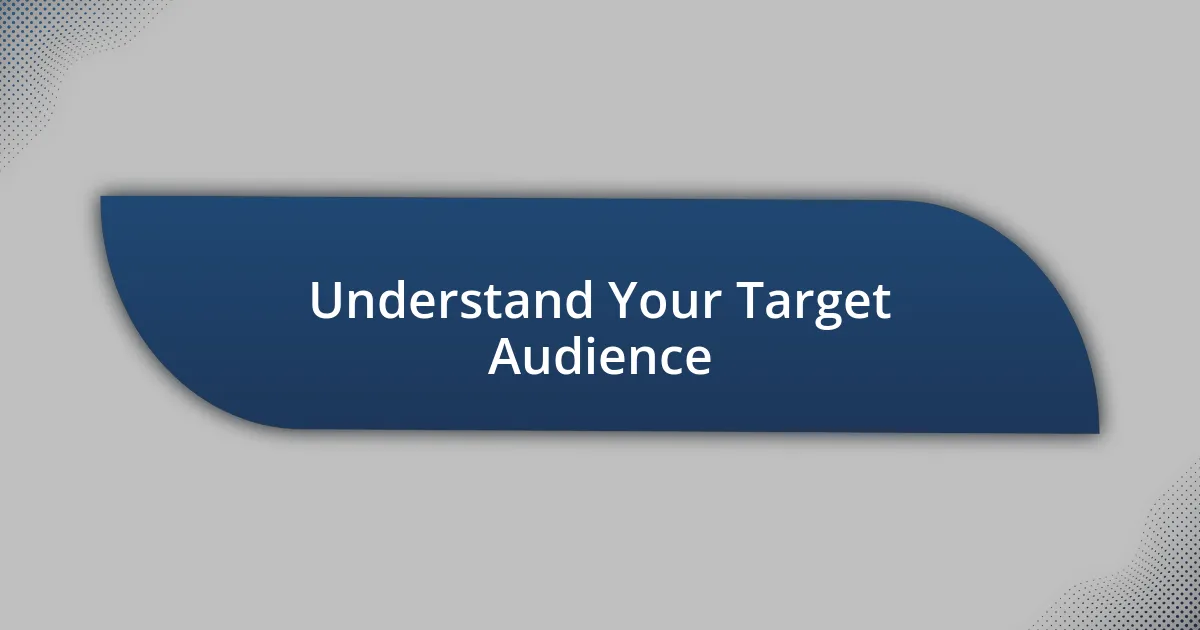
Understand Your Target Audience
Understanding your target audience is fundamental when creating compelling NFT listings. I remember my first NFT drop; I spent hours crafting the perfect art without considering who would actually buy it. It struck me later that connecting my work with the right audience would have made a world of difference in its appeal.
What do you think motivates potential buyers? Is it the storytelling behind the art, the community vibe, or the investment potential? It’s crucial to tap into what resonates with your audience. When I tailor my listings to address their interests, I see a significant uptick in engagement. It’s incredible how a personal touch can bridge the gap between the artwork and the collector’s emotions.
Consider conducting informal surveys or engaging with your community on social media to gather insights. I’ve found that even a simple question can yield valuable feedback. This kind of interaction not only enhances my understanding but also fosters a sense of connection with potential buyers, making them feel like part of the journey.
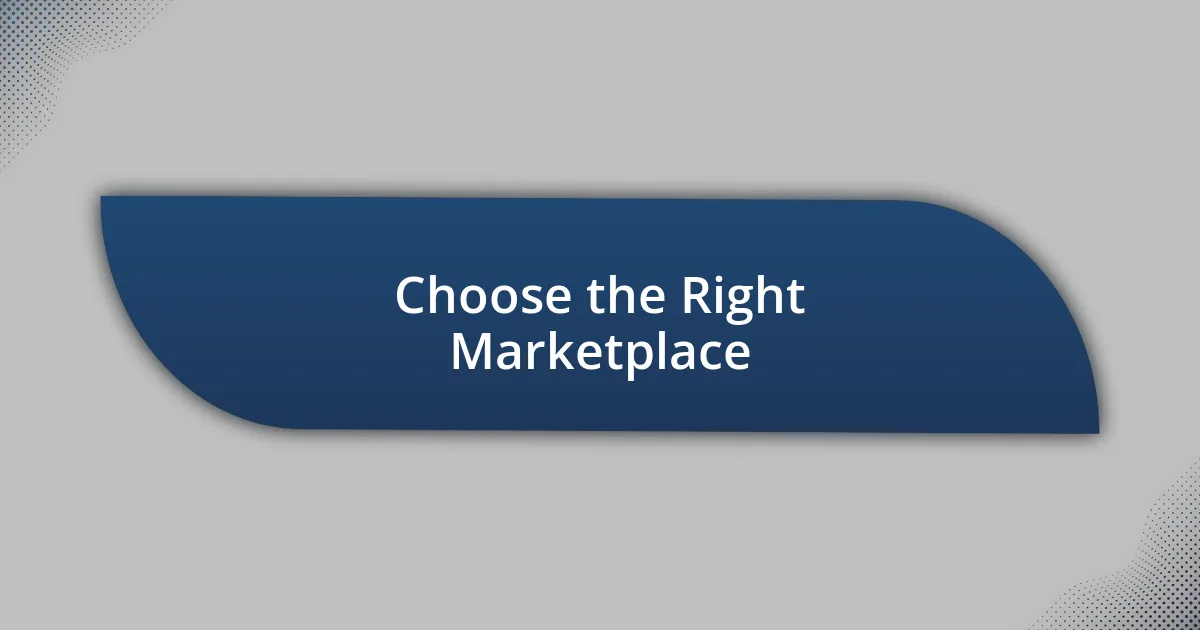
Choose the Right Marketplace
Choosing the right marketplace for your NFTs is like selecting the perfect gallery to showcase your art. With various platforms available, each one offers unique features, audiences, and fee structures. From my experience, picking a marketplace that aligns with my vision and target demographic can greatly influence the visibility and desirability of my listings.
I recall listing my first NFT on a platform known for its low fees, but I quickly realized the audience was minimal. My art deserved a stage where it could shine, not merely linger in obscurity. After switching to a more vibrant community-focused marketplace, I felt an immediate difference in engagement and connection—suddenly, my work resonated more with collectors passionate about the genre.
Ultimately, understanding the trade-offs between different marketplaces is essential. Some prioritize high-end collectors, while others cater to more casual buyers. Evaluating aspects like transaction fees, community involvement, and platform reputation can help you make an informed choice. I’ve learned that the right marketplace can amplify not just your sales but also the narratives and connections behind your work.
| Marketplace | Features |
|---|---|
| OpenSea | Large user base, diverse NFTs, user-friendly interface |
| Rarible | Decentralized, community-driven, allows users to create and sell |
| SuperRare | Curated, higher-end collectors, exclusive artwork |
| Nifty Gateway | Drops from well-known artists, credit card payments accepted |
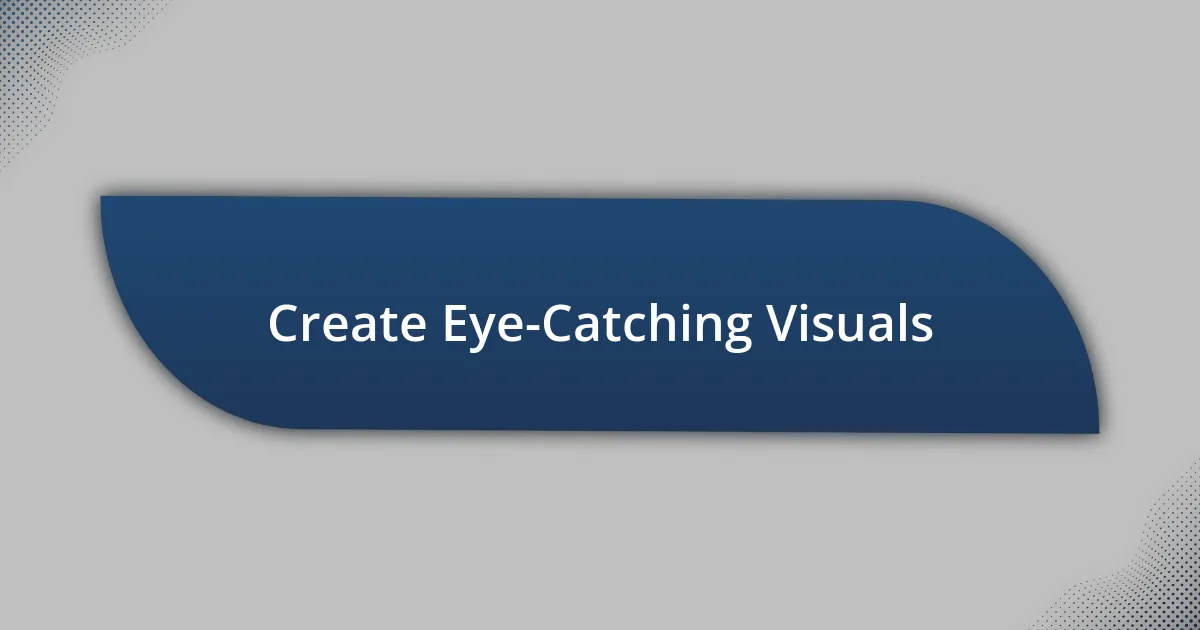
Create Eye-Catching Visuals
Creating eye-catching visuals is crucial in attracting potential buyers to your NFT listings. I’ve learned that the aesthetic impact of your art can significantly influence a collector’s decision to engage. For instance, I once experimented with vibrant color palettes and dynamic compositions, and I noticed a marked increase in interest and interactions. The visuals don’t just represent the artwork; they create an emotional connection that draws people in.
When it comes to crafting stunning visuals, consider these key elements:
- High Resolution: Always use high-quality images. Blurry or pixelated visuals can turn off buyers.
- Unique Style: Find a distinctive style that reflects your personality and sets your work apart from others.
- Contextual Presentation: Present the NFT in an engaging environment or scenario—this helps buyers envision how it fits into their collection.
- Animated Elements: If possible, incorporate subtle animations or interactive features to make your listing more engaging.
- Compelling Thumbnails: Design eye-catching thumbnails to make a strong first impression, as this is often what buyers will see first.
By paying attention to these details, you can make your NFTs not just items to purchase but experiences to explore.
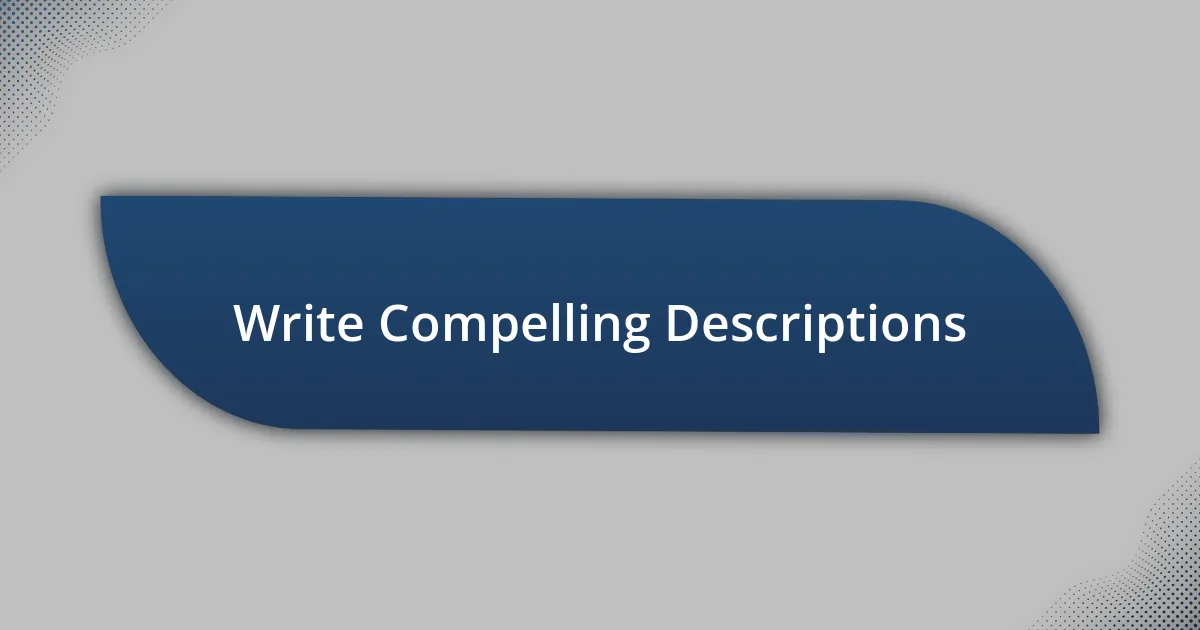
Write Compelling Descriptions
When writing descriptions for your NFT listings, the key is to evoke emotions and tell a story that resonates with potential buyers. I remember when I crafted a description for a particularly meaningful piece of art; I focused on the inspiration behind it and how it connected to my own experiences. This not only humanized the artwork but also created a deeper connection with viewers who could see a piece of my journey reflected in the piece they were considering.
Your descriptions should paint a vivid picture while remaining concise. For example, instead of simply stating “This is a digital landscape,” I highlighted its unique features: “Imagine stepping into a serene digital landscape, where every detail whispers tranquility and invites you to escape reality.” This approach transformed a simple description into an invitation for buyers to experience the artwork themselves. What emotions do you want to evoke in your audience? Answering this can guide your wording and tone.
Moreover, don’t underestimate the power of detail. Providing specifics—such as the techniques you used or the story that inspired the artwork—can enrich your description. I often find that mentioning unique elements, like the use of a specific digital medium or a personal anecdote about the creation process, adds authenticity and interest. This not only distinguishes your piece but also helps potential buyers see the value and effort you put into your art.
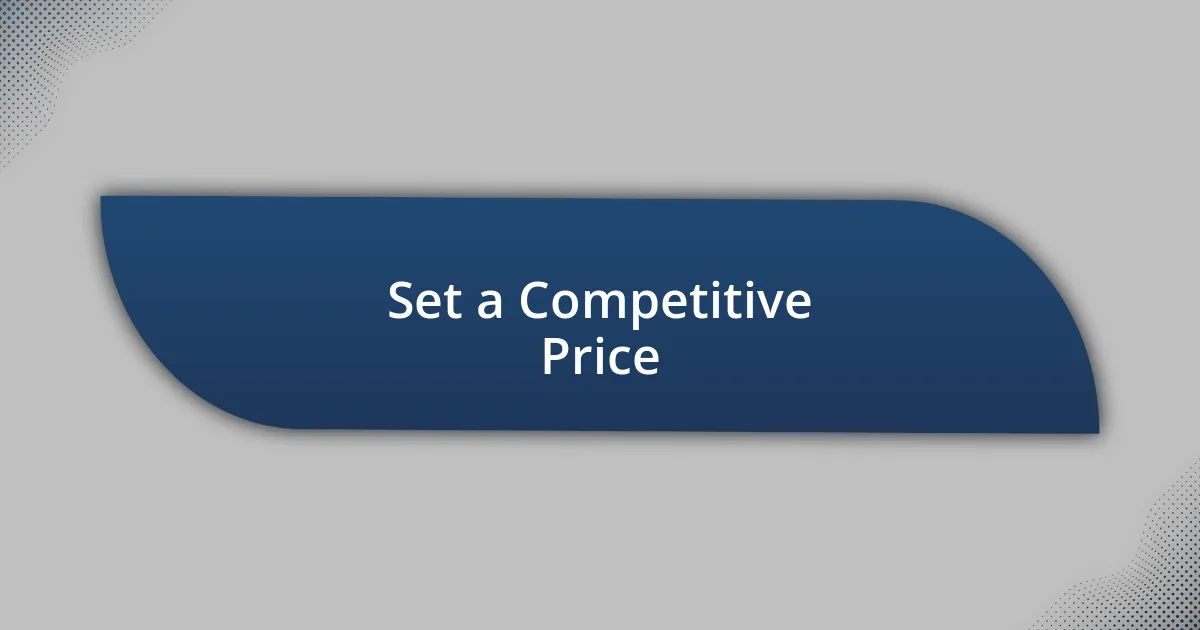
Set a Competitive Price
Setting a competitive price for your NFT listings can feel daunting, but it’s essential for attracting potential buyers. I remember my first experience pricing an NFT; I worried about undervaluing my work. After some research, I found that looking at similar pieces in the market provided clarity on what price points felt reasonable yet appealing.
It’s important to consider not just the cost of creation but also the perceived value of your work. When I set the price for a piece that I felt was particularly special, I reflected on its uniqueness and the emotions it invoked in those who viewed it. This introspection allowed me to establish a price that felt right—one that honored my effort while still being within a buyer’s expected range. Have you done a comparative analysis of similar NFTs? If not, this step could provide invaluable insights.
Don’t shy away from adjusting your pricing based on market demand. I once had an NFT that didn’t sell at first, despite my confidence in its quality. After a few months, I lowered the price slightly, and it quickly gained traction. Pricing can truly be dynamic, and staying attuned to buyer interest and trends can significantly enhance your chances of a successful sale.
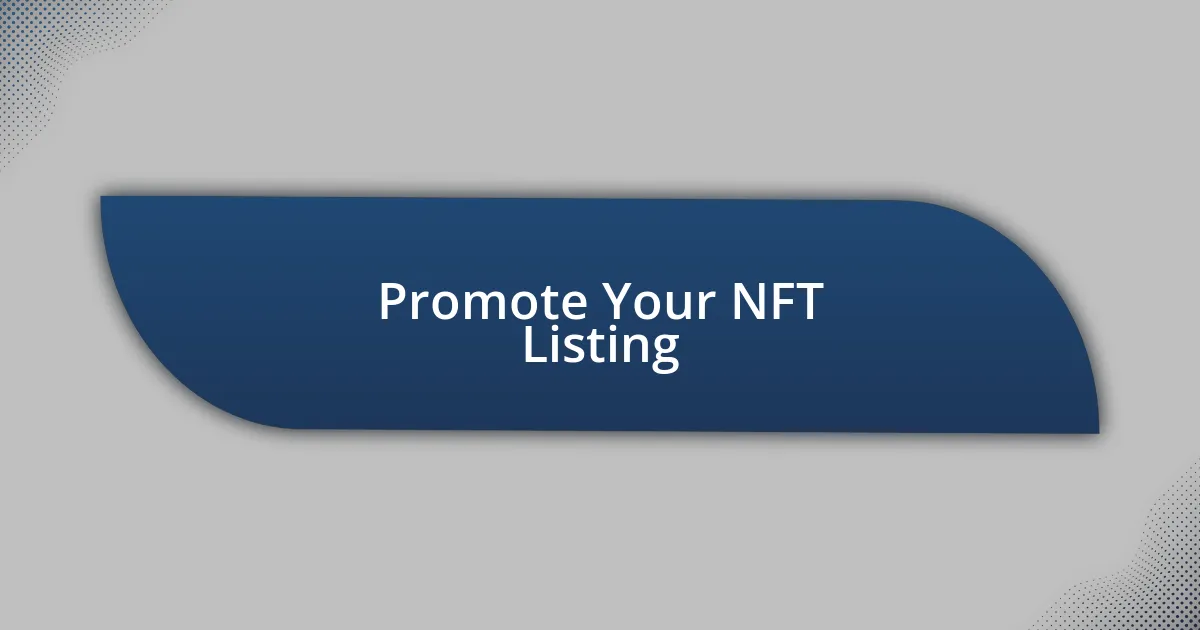
Promote Your NFT Listing
When it comes to promoting your NFT listing, I’ve learned that leveraging social media can make all the difference. I remember sharing my first NFT on Twitter and being pleasantly surprised by the engagement it received. Utilizing platforms like Instagram and Discord, where art enthusiasts gather, can help your work reach a broader audience. Are you active in these communities? If not, it might be time to dive in and start connecting.
Engaging with your audience is crucial in this space. Personally, I found that responding to comments and messages about my NFTs not only built rapport but also fueled interest in my work. When collectors feel a personal connection with the artist, they’re often more inclined to purchase. Try asking questions or running polls about your artwork—these interactions can create a sense of community around your listings.
Another effective strategy is collaborating with other creators. I participated in a joint giveaway with a fellow NFT artist, and the visibility it created was phenomenal. By tapping into each other’s audiences, we both garnered new followers and potential buyers. Think about who you admire in the space and how you might work together for mutual benefit; it could be a game-changer for your promotional efforts.
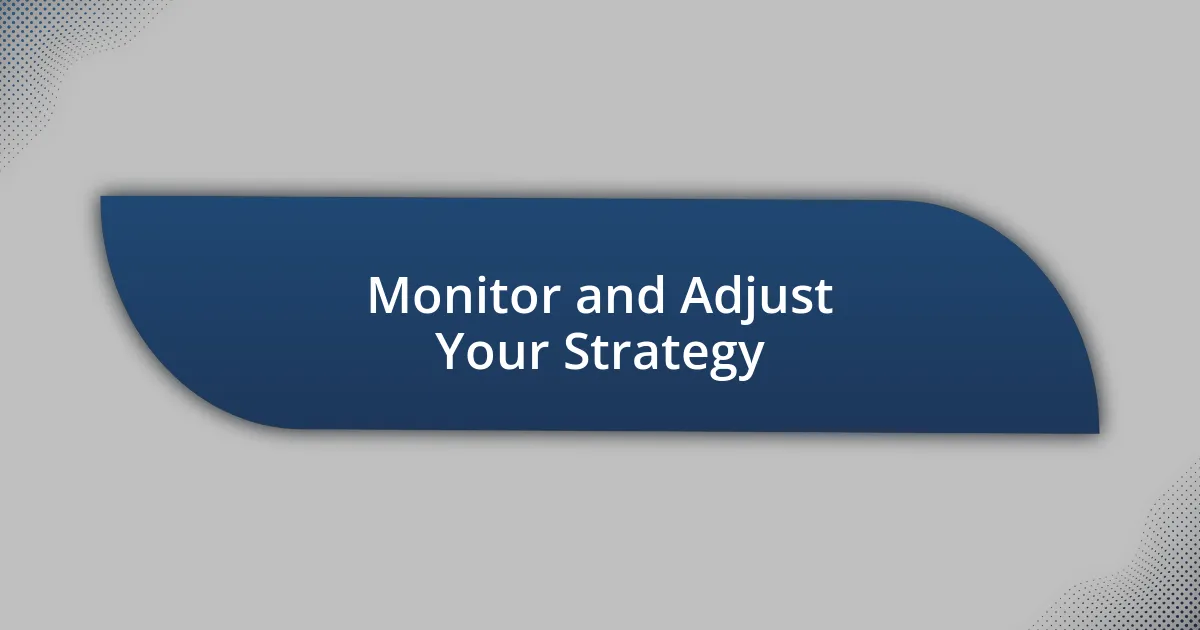
Monitor and Adjust Your Strategy
Adjusting your strategy based on real-time feedback is essential in the ever-evolving NFT marketplace. I distinctly recall moments where I hesitated to tweak my listing after receiving constructive criticism. However, once I embraced the feedback, not only did my engagement rates rise, but I also felt more connected to my audience. Isn’t it fascinating how a few adjustments can unlock new levels of interest?
Tracking performance metrics helps you understand what resonates and what doesn’t. For instance, I started analyzing which of my NFTs were gathering the most attention and realized that those with interactive elements attracted a larger audience. By shifting my focus toward creating more engaging content, I not only showcased my art better but also reinforced my brand’s unique identity. Have you taken the time to review your own metrics lately?
Finally, don’t be afraid to experiment with your listings. I once released a collection with a different pricing strategy, inspired by the trends I was observing. The outcome surprised me; it not only attracted new collectors but also sparked conversations within my community. Reflecting on past experiences can be enriching—what worked before might inspire a new approach today. Adjusting your strategies might just lead to your next big breakthrough.

